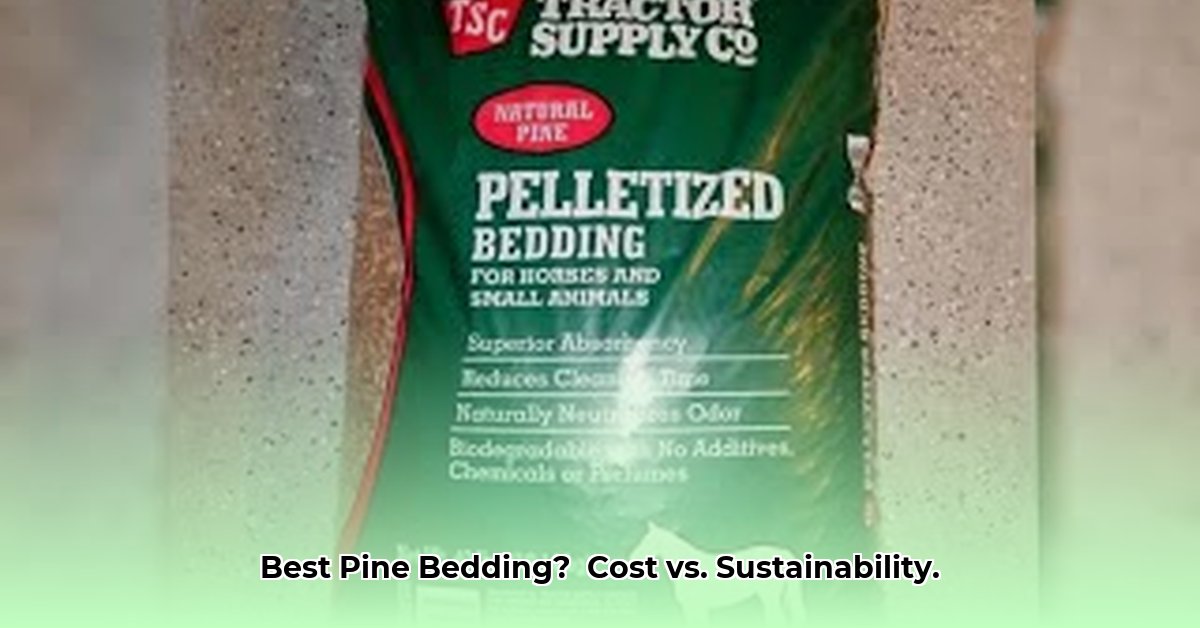
Picking the right bedding for your animals is crucial for their health, your farm's sustainability, and your bottom line. This guide compares pine pellets and pine shavings—two readily available options from Tractor Supply—to help you make an informed decision. We'll analyze absorbency, costs, environmental impact, animal welfare, and ease of use, providing a step-by-step framework for choosing the best bedding for your specific needs. For more on Tractor Supply pellets, check out this helpful resource.
Pine Pellets vs. Pine Shavings: A Detailed Comparison
Both pine pellets and shavings offer advantages, but understanding their key differences is essential. This comparative analysis will help you determine which option best suits your farm.
Tractor Supply Pine Pellets:
Pros:
- Superior Absorbency: Pellets absorb significantly more liquid than shavings, minimizing bedding changes and reducing labor costs. This translates to considerable long-term savings.
- Efficient Handling & Storage: Their compact size simplifies storage and transport, saving space and effort.
- Reduced Dust: Pellets generally produce less dust, creating a healthier environment for your animals, particularly those susceptible to respiratory problems.
- Potentially Lower Long-Term Costs: While the upfront cost is higher, reduced labor and disposal costs often outweigh this initial investment.
- Easier Composting (Potentially): The compact nature of pellets can simplify composting, though proper management remains essential.
Cons:
- Higher Initial Cost: The upfront purchase price is generally higher than for shavings.
- Expansion Upon Wetting: Pellets expand when wet, requiring careful management to prevent overflow.
- Availability: Supply may be more variable than shavings, depending on location and season.
Tractor Supply Pine Shavings:
Pros:
- Lower Initial Cost: Shavings are typically less expensive to purchase.
- Wide Availability: Shavings are more consistently available from various suppliers.
- Suitability for Certain Animals: Some animals, especially those that enjoy digging or nesting, may find shavings more comfortable.
Cons:
- Lower Absorbency: Requires more frequent changes, increasing labor and disposal costs. This can significantly impact the overall cost over time.
- Increased Dust: Shavings often generate more dust, posing respiratory risks for sensitive animals.
- Bulky and Difficult to Handle: Their bulkiness increases storage needs and makes handling more cumbersome.
- Higher Long-Term Costs: The increased frequency of changes and labor can make the overall cost comparable to, or even exceed, that of pellets.
- More Complex Composting: The larger volume necessitates a more robust composting system.
Choosing the Right Bedding: A Step-by-Step Guide
This framework will guide you through the decision-making process:
Step 1: Animal Type: Different animals have different needs. Horses might require a different bedding choice than poultry. Consider their size, bedding preferences, and susceptibility to respiratory issues.
Step 2: Climate: In humid areas, the superior absorbency of pellets may be crucial. In drier climates, shavings might suffice. This is a critical factor affecting bedding frequency and cost.
Step 3: Resource Assessment: Evaluate your available time, storage space, and budget. Pellets, while initially more expensive, may save time and labor over the long run. Shavings are more economical up front but have higher labor demands. Do you have appropriate composting infrastructure?
Step 4: Cost Calculation: Create a spreadsheet comparing total cost (initial purchase, labor, disposal) per unit of bedding and per animal over a specified timeframe (e.g., one year). This detailed comparison will highlight the true cost-effectiveness of each option.
Step 5: Sustainability Considerations: How important is minimizing waste and environmental impact? Pellets often create less waste. However, proper composting is crucial for both to minimize environmental impact.
Step 6: Risk Mitigation: Account for potential fluctuations in supply and price. Having alternative bedding options or building buffer stock is crucial for any farm operation.
Step 7: Regulatory Compliance: Ensure your chosen bedding complies with local animal waste management and environmental regulations.
Actionable Tips for Efficient Bedding Management
- Optimal Storage: Store bedding in a dry, well-ventilated area to prevent spoilage and pest infestations.
- Effective Composting: For shavings, establish a well-designed composting system to reduce waste and create valuable fertilizer.
- Supplier Relationships: Build strong relationships with reliable suppliers to ensure consistent availability.
Choosing the right bedding is a critical decision. This guide provides a framework; your specific circumstances will determine the best option. Remember to conduct ongoing research and adapt your strategies as needed. This ongoing process is key to long-term profitability and sustainable animal management.
Further Resources
[This section would contain links to relevant websites and research articles. While not provided in your draft, including links increases the value and SEO power of this guide.]